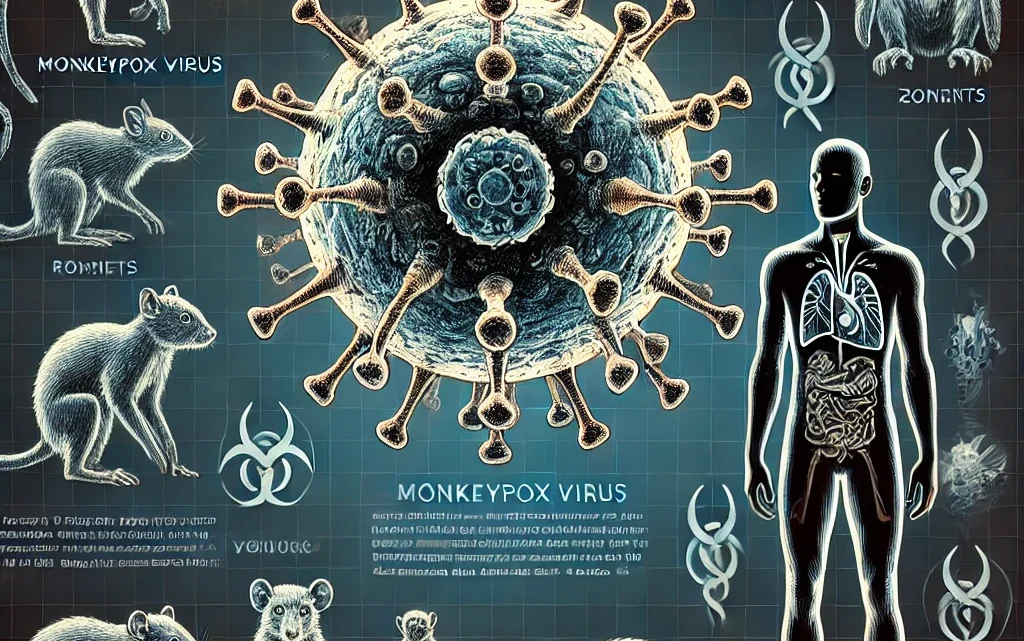
Understanding Monkeypox: An In-Depth Guide to Prevention and Treatment
Understanding Monkeypox: An In-Depth Guide to Prevention and Treatment
Monkeypox is an emerging zoonotic disease that has recently gained international attention due to its outbreaks beyond the African continent. This article provides a comprehensive understanding of Monkeypox, detailing its causes, symptoms, transmission, prevention, and treatment options. Whether you are a health professional, an individual living in an affected area, or simply someone interested in global health, this guide will offer valuable insights into how to protect yourself and others from this virus.
1. What is Monkeypox?
Definition and Background
Monkeypox is a viral infection caused by the Monkeypox virus, a member of the Orthopoxvirus genus, which also includes smallpox. The disease was first discovered in 1958 when two outbreaks occurred in colonies of monkeys kept for research, giving the disease its name. The first human case of Monkeypox was identified in 1970 in the Democratic Republic of Congo.
Virus Structure and Characteristics
The Monkeypox virus is an enveloped double-stranded DNA virus. It is relatively large compared to other viruses, making it easier to study under a microscope. Its genetic material is more stable than RNA viruses, which means it mutates at a slower rate, potentially aiding in vaccine development and long-term control efforts.
2. Symptoms of Monkeypox
Initial Symptoms
Monkeypox symptoms usually appear 7-14 days after exposure, but the incubation period can range from 5-21 days. Early symptoms include:
- Fever
- Intense headache
- Lymphadenopathy (swelling of the lymph nodes)
- Back pain
- Myalgia (muscle aches)
- Severe fatigue
Progression of Symptoms
After the initial symptoms, a rash develops, typically starting on the face and then spreading to other parts of the body, including the palms of the hands and soles of the feet. The rash evolves through several stages:
- Macules: Flat, discolored spots on the skin
- Papules: Raised, firm bumps
- Vesicles: Small, fluid-filled blisters
- Pustules: Blisters filled with pus
- Scabs: The pustules eventually dry out and scab over
The illness typically lasts for 2-4 weeks, and most people recover without treatment. However, the disease can be more severe, particularly in children, pregnant women, and individuals with compromised immune systems.
3. How Does Monkeypox Spread?
Zoonotic Transmission
Monkeypox is primarily transmitted to humans from animals, most commonly through direct contact with the blood, bodily fluids, or skin lesions of infected animals. The virus is believed to be carried by various animals, including rodents and primates.
Human-to-Human Transmission
Human-to-human transmission occurs through close contact with respiratory secretions, skin lesions of an infected person, or recently contaminated objects. Transmission via respiratory droplets usually requires prolonged face-to-face contact, making healthcare workers, household members, and close contacts of infected individuals particularly vulnerable.
Prevention Strategies
- Avoid Contact with Potentially Infected Animals: In regions where Monkeypox is endemic, avoid contact with animals that could harbor the virus, particularly sick or dead animals.
- Practice Good Hygiene: Regular hand washing with soap and water or using an alcohol-based hand sanitizer is crucial.
- Use Personal Protective Equipment (PPE): Healthcare workers should use appropriate PPE when treating patients suspected of having Monkeypox.
- Vaccination: The smallpox vaccine has been shown to be about 85% effective in preventing Monkeypox. Vaccination may be recommended for individuals at higher risk, such as those who are close contacts of confirmed cases or healthcare workers.
4. Diagnosis and Treatment
Diagnosis
Diagnosis of Monkeypox can be challenging, especially in regions where the disease is not commonly seen. The initial symptoms are similar to those of other illnesses like smallpox, chickenpox, or measles. Laboratory testing, such as polymerase chain reaction (PCR) tests, is essential to confirm the presence of the Monkeypox virus.
Treatment Options
There is no specific treatment approved for Monkeypox. However, since the Monkeypox virus is closely related to the smallpox virus, antiviral drugs and vaccines developed for smallpox may be used to control outbreaks. Treatment is primarily supportive, including:
- Hydration: Maintaining fluid balance is crucial.
- Pain Management: Over-the-counter pain relievers can help manage symptoms like headaches and muscle aches.
- Antivirals: In severe cases, antivirals like tecovirimat, originally developed for smallpox, may be used under compassionate use protocols.
Monitoring and Recovery
Patients with Monkeypox should be monitored closely, especially for potential complications like secondary infections. Recovery typically involves supportive care, and most patients recover fully without long-term effects. Scarring from the rash may occur, especially if lesions become infected.
5. Global Impact and Recent Outbreaks
Recent Outbreaks
In recent years, there have been several outbreaks of Monkeypox outside Africa, raising concerns about the potential for wider spread. These outbreaks have highlighted the importance of global surveillance and rapid response measures to contain the disease.
Public Health Response
The World Health Organization (WHO) and other health agencies have implemented strategies to monitor and control Monkeypox outbreaks. This includes educating the public about the disease, improving diagnostic capacity, and ensuring the availability of vaccines and treatments where needed.
Future Challenges
As the world becomes more interconnected, the risk of zoonotic diseases like Monkeypox spreading beyond their traditional boundaries increases. Continuous surveillance, research, and international cooperation are essential to prevent and control future outbreaks.
Conclusion
Monkeypox is a serious but manageable disease. Understanding its symptoms, modes of transmission, and prevention strategies can help reduce the risk of infection. While the disease remains rare outside endemic regions, awareness and preparedness are crucial in preventing its spread.
#Monkeypox #PublicHealth #ViralInfections #GlobalHealth #InfectiousDiseases #HealthAwareness #DiseasePrevention #ZoonoticDiseases #Healthcare